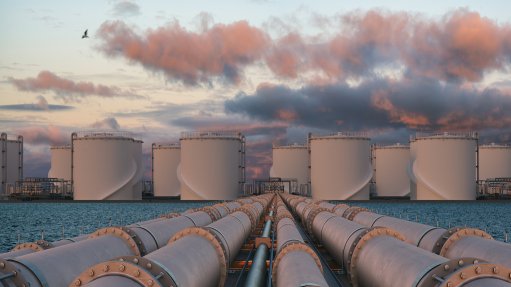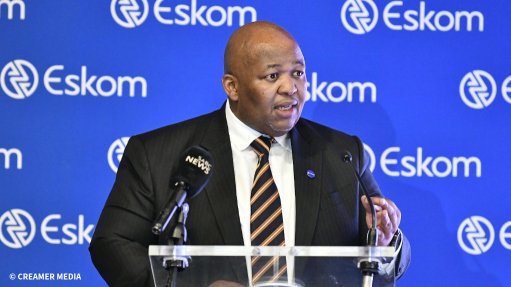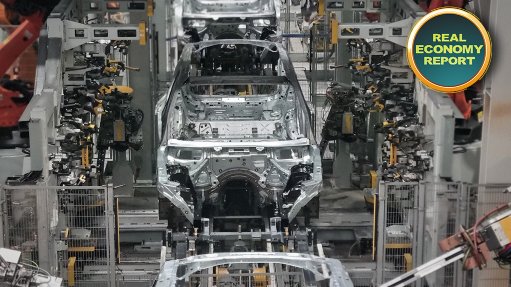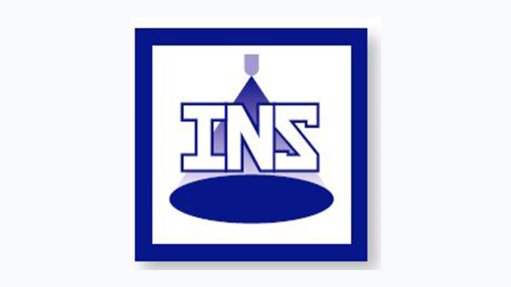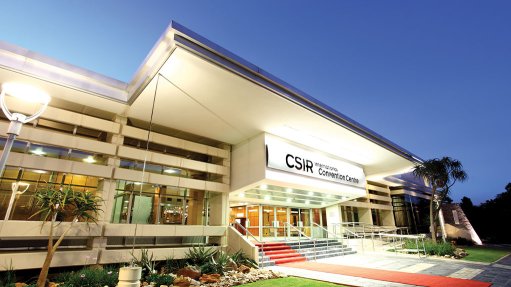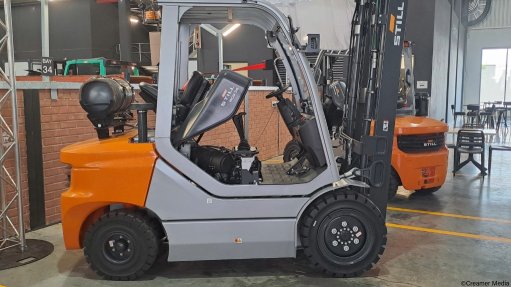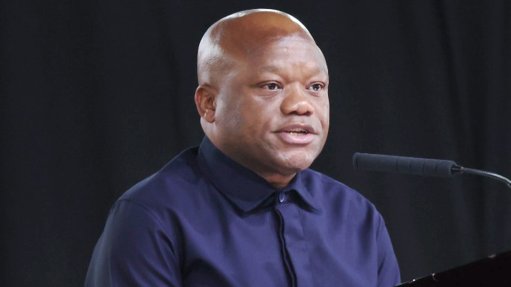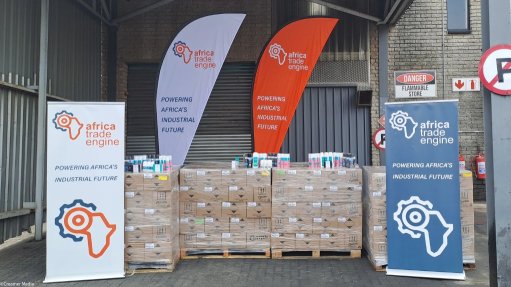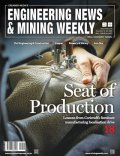We’re working with government, looking at possible solutions, says Glencore Alloys CEO

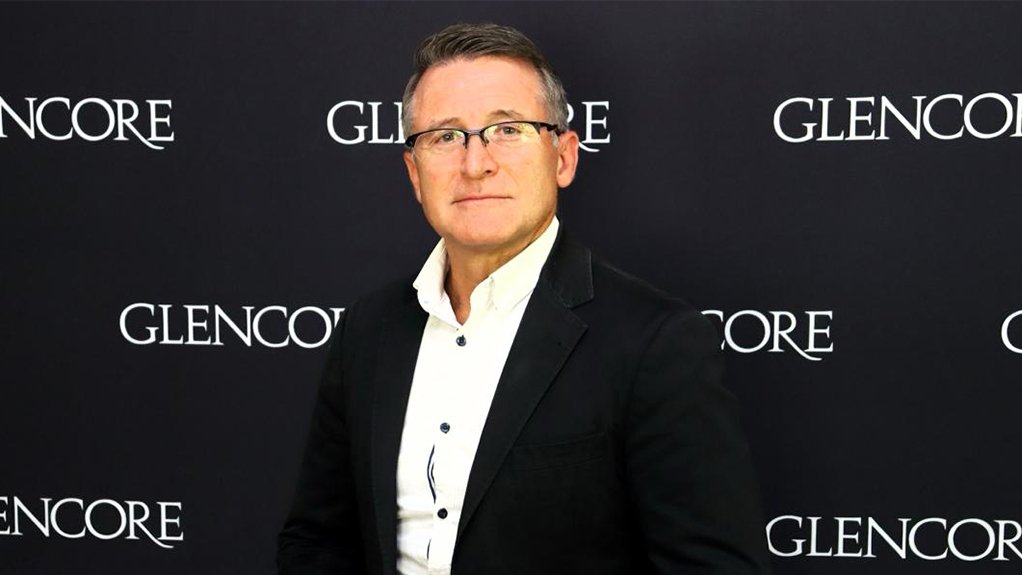
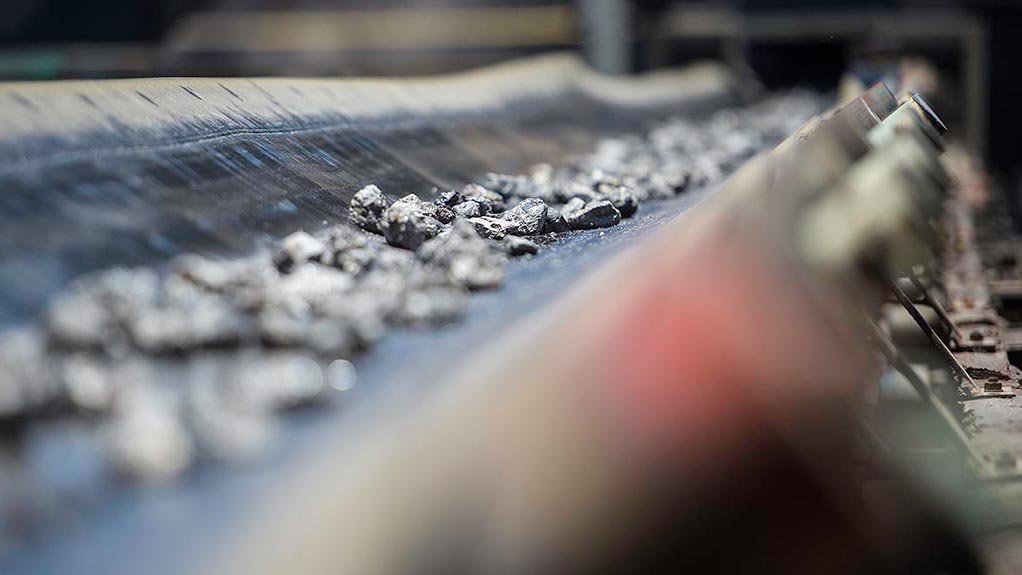
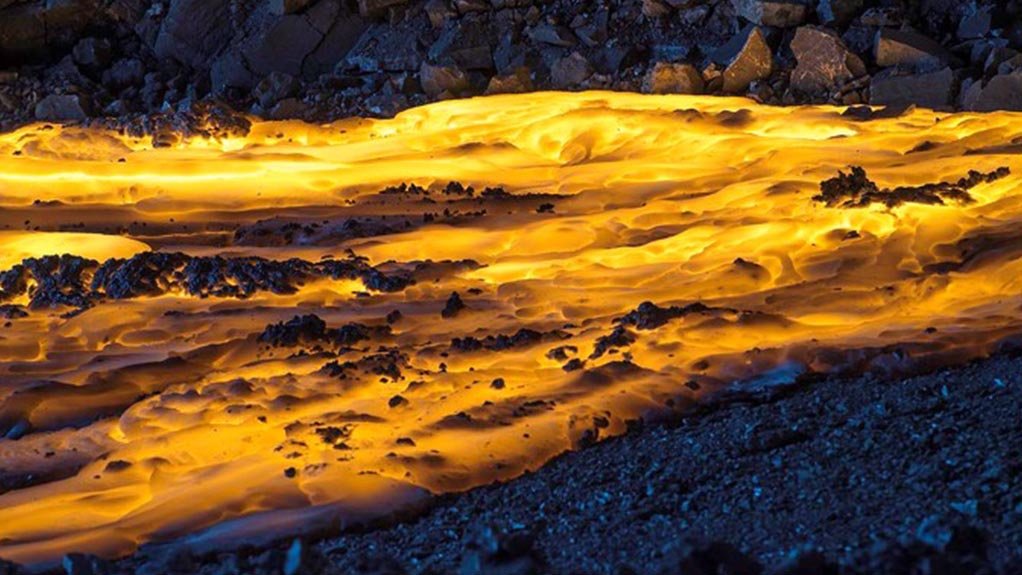
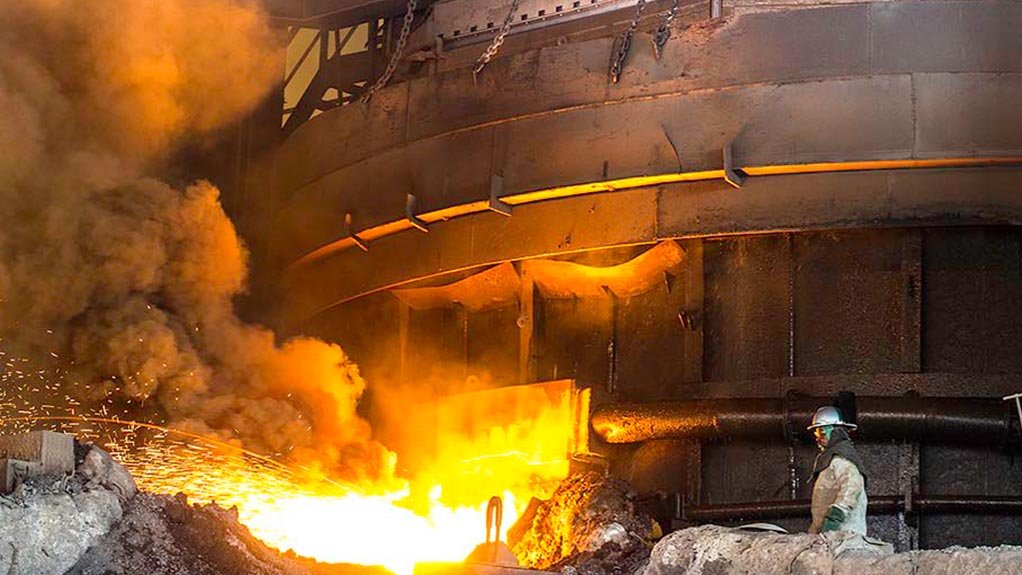
Glencore Alloys CEO Japie Fullard interviewed by Mining Weekly's Martin Creamer. Video: Darlene Creamer.
Glencore Alloys CEO Japie Fullard.
Chrome ore conveyance.
Ferrochrome flow.
Ferrochrome in the making.
JOHANNESBURG (miningweekly.com) – “We’re working with government, looking at possible solutions,” Glencore Alloys CEO Japie Fullard tells Mining Weekly amid Glencore reporting this week that not one of its ferrochrome smelters is operative, not even its world-class Lion smelter – although that is expected be brought back into operation following current maintenance, but probably not this year.
Glencore Alloys produces chrome ore and then beneficiates it into ferrochrome product. “But, ultimately, we’re a chrome unit producer,” Fullard pointed out. (Also watch attached Creamer Media video.)
“Wherever we are getting the most value is where we’ll obviously capitalise. For that reason, currently if we evaluate between chrome ore exports versus ferrochrome exports, the value of the chrome ore is superceding the value of the ferrochrome,” he added.
This is ironic because, as Fullard pointed out, ferrochrome should be a five-times multiplier of chrome ore value, so to export ferrochrome, in terms of the revenue, should be massive.
Moreover, beneficiation is a job-creation cornerstone, so closing all the smelters is not good for South Africa.
So, what’s the solution?
“The first real short-term solution for us must be to get cheaper electricity to enable us to continue to beneficiate. We must be put in a position to be competitive with China.
“Then there are other mechanisms that we’re looking at, such as the control of exports by curbing the illegal mining that's now happening. Another is to bring us into special economic zones that give us tax relief.
“Thereafter, if we can get to a longer-term solution in terms of mechanisms to beneficiate more ore in South Africa, that’ll be first prize,” Fullard outlined.
But he made it clear that producing ferrochrome in today’s world results in the burning of a lot of cash, which is why the Boshoek and Wonderkop ferrochrome smelters had been put on hold.
“When it comes to our Lion smelter, we brought the maintenance programme forward, and it's not at all because of the winter tariffs.”
A negotiated price agreement (NPA), which is a flat rate, has been secured from Eskom, which means there is no need to continue to pursue the former practice of winter shutdown.
“But even with the NPA, even a smelter like Lion, which I would still argue is the most efficient unit in the world, is not making profit, and for that reason, we’ve also stopped production at the Lion complex, bringing forward the maintenance and we will restart it later.
“But the way the price of ferrochrome is looking now, we’re most probably not going to start it up for the rest of this year.
“What we are lobbying for is electricity that is cheap enough for us to be able to be competitive. What we are lobbying for is to be included into special economic zones.
“What we are lobbying for is stopping the illegal mining that's happening in South Africa. I'm not sure if you know this, but illegal mining of chrome ore is to the tune of about 10%.
“So, if government has got a method of stopping illegal mining, and you take 10% of the chrome units out of the market, that will benefit the whole industry because we want to beneficiate in South Africa,” Fullard pointed out.
Mining Weekly: When Engineering News & Mining Weekly last spoke to you, there was hope that the new lower-energy SmeltDirect technology from African Rainbow Minerals would bring local ferroalloy production in general, and ferrochrome in particular, back to competitive life. Is there still hope that it will do so?
Fullard: We are investigating that technology in detail. We are working with African Rainbow Minerals on this and their technology is definitely, efficiency wise, a great solution. But even with that solution, it's going to ask for a huge amount of capital to be invested and because of the uncertainty of electricity price and also the supply of electricity, investment is going to be extremely difficult in this environment where we are now. We did test the technology. We are confident that with a lot of additional testwork, it can work. But in the absence of certainty and to spend a lot of capital on something that we are not yet 100% sure about, is not going to work.
When it comes to pricing, what sort of price agreement with Eskom would be needed to get these smelters going again?
You would know that a Cabinet statement came out on the 25th of June in which specific reference was made to ferroalloys, but in actual fact ferrochrome, because I can tell you that Samancor, our competitor and friend in South Africa, is in exactly the same situation as we are. They've got, I think, four furnaces running out of 24, something like that, so obviously what we need is cheaper electricity and I can tell you the reason why we are not competitive is because, if you have a look at China, China’s electricity price is more than half below the electricity price that we are currently at, so we need an electricity price that is more than half cheaper for us to start up and be competitive again.
Then you spoke about electricity supply also needing to be consistent. We've got rid of loadshedding, haven't we?
I think we've got rid of loadshedding because there's quite a lot of smelting capacity that's turned off. I must honestly say that if you have a look at Eskom’s performance, their efficiencies are definitely on the increase. They are now close to 70% as far as I know, coming from a base of 48%, so there's definitely improvement in Eskom. But if we and also Samancor turn all our furnaces back on, we're talking about more than two gigawatts of additional energy consumption returning and obviously that will again put a huge amount of pressure on the energy grid.
Isn’t SmeltDirect able to ensure that the impact of cross-border adjustment mechanism (CBAM) tariffs on South African ferrochrome goes out of the window?
I don't think it will go out of the window because remember you are still going to use Eskom energy to convert chrome into ferrochrome, so the CBAM is not going to fall away, but the impact will be smaller, on the basis of megawatts per ton. If I just look at a place like Lion, I can tell you now that there's not a single technology that's lower in megawatts per ton than the Lion complex. The SmeltDirect is looking quite good in terms of a reduction in megawatt per ton, but it's not going to be zero, and it's still going to be above one megawatt per ton. But the technology is definitely there. It's been proven that it can work. But I think in this uncertain world, to spend capital now on something that's not yet 100% tested, is not going to happen. We are doing the pilot tests but we still need to focus on actual commercialisation.
Is SmeltDirect able to process chrome fines, slimes and carbonate. Is there enough of this waste to lower the need for chrome ore from chrome mining companies sufficiently to get people interested?
I'm not sure about carbonate. I think, in that instance, you're referring more to, let's say, the manganese side of things. But even with SmeltDirect, there is still a need to conglomerate the fines, and it's not going to get rid of the waste material, by the way. You still need a certain quality of chromite content in your product – it must still have a 40% chrome content and that will not get rid of the waste, so it's not a technology that will turn waste into a product.
A tax on the export of raw chrome ore is suggested to ensure there is enough ore for beneficiation into far more valuable ferrochrome. Couldn't an agreement be reached to ensure that the raw chrome ore that South Africa needs for ferrochrome is supplied by the companies mining this chrome, and then the rest can be exported. What’s your view on that?
They did talk about a chrome tax and obviously we felt that we need a mechanism; what that mechanism looks like, we don't know yet. But I think it’s very dangerous to go into a mechanism that could actually hurt the whole industry. It's very important to understand that any chrome ore tax could be a blunt tool, so we don't know if that will work and it’s not something that we’re lobbying for.
Do you have a mechanism in mind?
I can tell you that it's an extremely complex mechanism, and we’re looking at that, but in the absence of this mechanism, we would not support any quotas or any ore tax because we don't know what that's going to do to the rest of the industry. Yes, we can perhaps save beneficiation in South Africa, or we can save the ferrochrome industry, but that should not be done to the detriment of the non-integrated producers, because that's not the way to do it. You can't punish some companies for the benefit of your own company. The solution must be based on marke-related supply and demand, so at this stage, we do not have a mechanism yet.
It's a fantastic national incentive that South Africa gets so much more money when the country exports beneficiated alloys. Surely there should be some intense activity to ensure that everybody benefits. Is there nothing in the world that can be followed that will benefit South Africa and everyone else involved?
Your comment is extremely valid. If you have a look at beneficiated product like ferrochrome, it’s a five-times multiplier versus chrome ore, so to export ferrochrome, in terms of the revenue for this country, it’s massive. That's the first thing. The second thing, if you have a look at labour and look at job creation, beneficiation is really a cornerstone, so closing all the smelters, is really going to hurt this country tremendously. What's very important is that, if you look back 20 years ago, South Africa couldn't keep up with the demand for ferrochrome from the stainless steel industry, and that's where the problem came in, and all of us started to export chrome ore because we could not beneficiate that ore in South Africa. In a perfect world, we should have kept on beneficiating and kept on growing the ferrochrome industry. But we didn't, because of not staying on an electricity growth path. If you compare us, for instance, with Zimbabwe, Zimbabwe has opted for a full ban. Now, you cannot do that in South Africa, because if you go for a ban in South Africa, it means that all the rest of the non-integrated producers cannot export their ore, so it's impossible to do that and we cannot convert that in South Africa. It’s a great concept if you do have the capability of converting chrome ore into ferrochrome, but we can only convert 4.5-million tons because it takes nine-million tons of chrome ore to produce 4.5-million tons of ferrochrome – two tons of chrome, one ton of ferrochrome, which lowers logistical constraints, so if we beneficiate more, we will have much more revenue for South Africa. We will have better logistical avenues, so there's huge advantage in this, but it must never be to the detriment of somebody else.
Article Enquiry
Email Article
Save Article
Feedback
To advertise email advertising@creamermedia.co.za or click here
Comments
Press Office
Announcements
What's On
Subscribe to improve your user experience...
Option 1 (equivalent of R125 a month):
Receive a weekly copy of Creamer Media's Engineering News & Mining Weekly magazine
(print copy for those in South Africa and e-magazine for those outside of South Africa)
Receive daily email newsletters
Access to full search results
Access archive of magazine back copies
Access to Projects in Progress
Access to ONE Research Report of your choice in PDF format
Option 2 (equivalent of R375 a month):
All benefits from Option 1
PLUS
Access to Creamer Media's Research Channel Africa for ALL Research Reports, in PDF format, on various industrial and mining sectors
including Electricity; Water; Energy Transition; Hydrogen; Roads, Rail and Ports; Coal; Gold; Platinum; Battery Metals; etc.
Already a subscriber?
Forgotten your password?
Receive weekly copy of Creamer Media's Engineering News & Mining Weekly magazine (print copy for those in South Africa and e-magazine for those outside of South Africa)
➕
Recieve daily email newsletters
➕
Access to full search results
➕
Access archive of magazine back copies
➕
Access to Projects in Progress
➕
Access to ONE Research Report of your choice in PDF format
RESEARCH CHANNEL AFRICA
R4500 (equivalent of R375 a month)
SUBSCRIBEAll benefits from Option 1
➕
Access to Creamer Media's Research Channel Africa for ALL Research Reports on various industrial and mining sectors, in PDF format, including on:
Electricity
➕
Water
➕
Energy Transition
➕
Hydrogen
➕
Roads, Rail and Ports
➕
Coal
➕
Gold
➕
Platinum
➕
Battery Metals
➕
etc.
Receive all benefits from Option 1 or Option 2 delivered to numerous people at your company
➕
Multiple User names and Passwords for simultaneous log-ins
➕
Intranet integration access to all in your organisation











